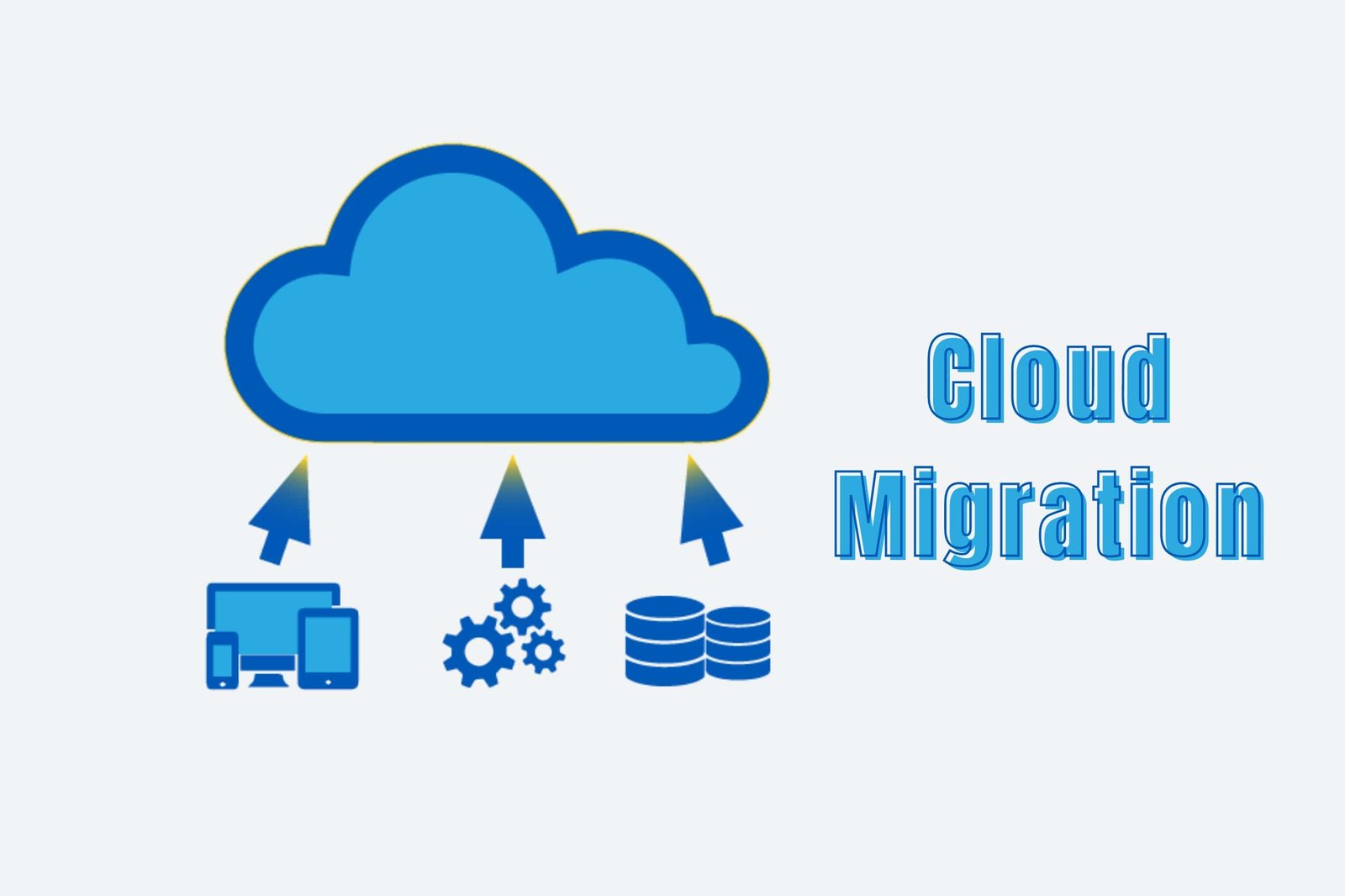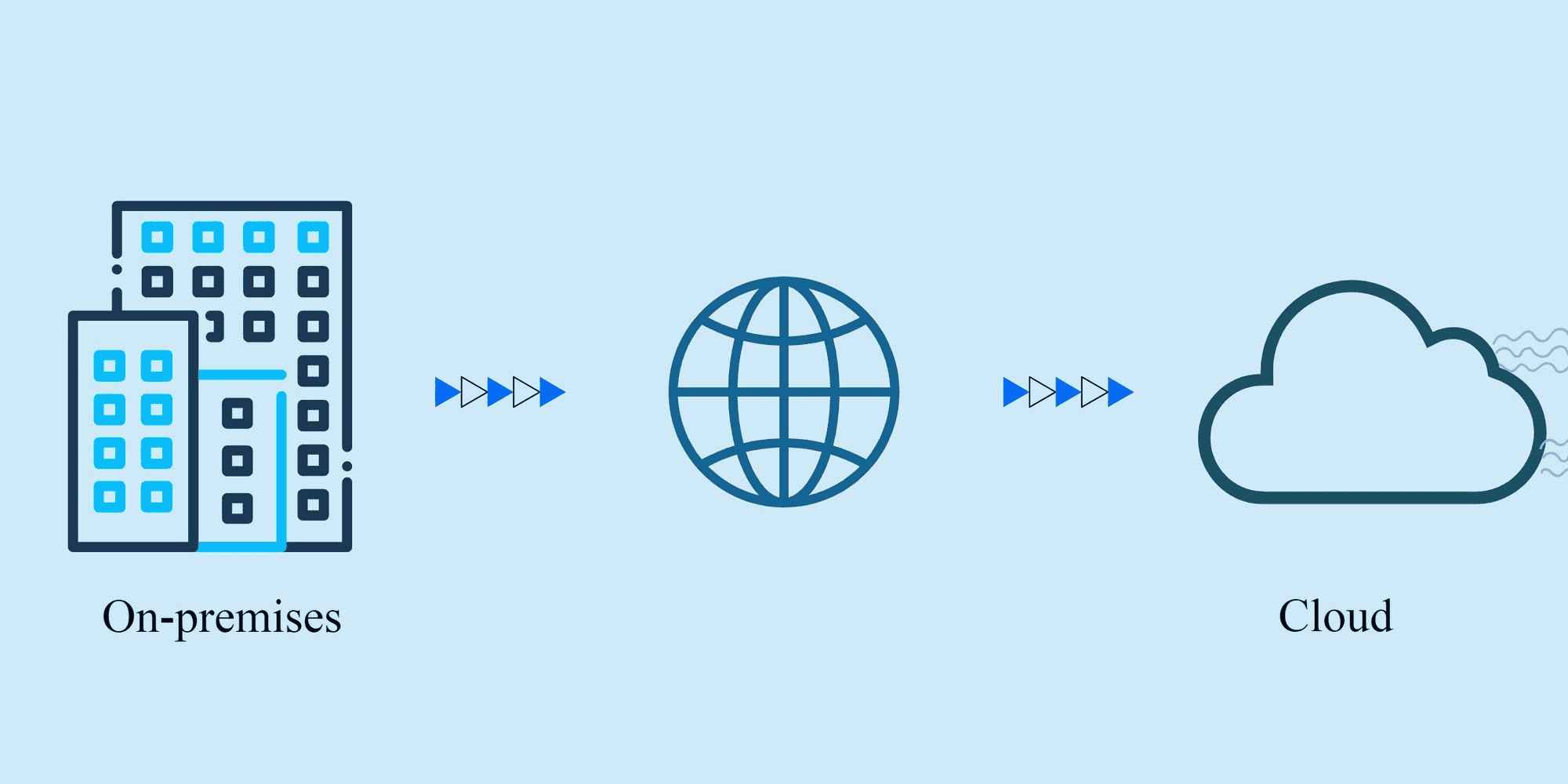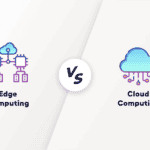The rapidly evolving technology domain is sending a wave of change across the industry. With the surge of technologies like cloud migration, we have more powerful ways of running and operating businesses. Cloud migration, in particular, has gained immense popularity.
Cloud migration allows organisations to transition their IT infrastructure to the cloud. This helps them save on maintenance costs and ensure a complete information backup. This keeps the information safe.
Irrespective of the business size, switching to the cloud has become a need of the hour. Hence, in this blog, we will cover extensively all the aspects associated with Cloud Migration Strategies.
What is Cloud Migration?
In simple words, cloud migration involves the transfer of data from the local infrastructure to the cloud. There are several benefits to doing so. For example, companies don’t need to rely on the on-premises set-up. It offers easier access to the data and complete restoration and backup.
There are several service providers in his domain, like Amazon Web Services (AWS), Microsoft Azure, and Google Cloud Platform (GCP). The next segment highlights the key benefits of cloud migration and its key features.
Benefits of Cloud Migration in Cloud Computing
- Scalability and Flexibility
One of the key reasons companies embracing cloud migration is the flexibility it offers. Moreover, it also gives you the leverage to scale up and down the resources based on your preferences. With its flexible computing capabilities, organizations can adjust their resource allocation quickly. This helps in meeting the fluctuating demand.
- Cost-effective
Every company is always on the lookout for methods that can help them save costs. Conventionally, handling the entire IT infrastructure along with investing in training the employees adds to the cost and is time-consuming. Conversely, adopting cloud migration strategies lets you switch to a pay-as-you-go model.
This nullifies the need to invest an upfront amount and also lessens the ongoing operational cost. It eventually saves time and money. Thus making cloud migration a promising feature.
- Confidentially and Reliability
The next benefit that cloud migration offers is enhanced security features. The World Wide Web is highly vulnerable, and so is its dynamics. Hence, there is a constant threat of information leaks. To overcome this, companies need to switch to methods that can assure data security.
With cloud migration, companies have a safe platform where they can create a central pool of data. This information is easily accessible. Moreover, the data is encrypted, ensuring complete security of the information. Also, these platforms offer built-in redundancy and disaster recovery mechanisms. It enhances data accessibility and also promises business continuity.
- Better Collaboration
Cloud-based solutions have become a necessity. It facilitates collaboration among teams irrespective of geographical location. Since a cloud-based solution allows the information to be easily accessible, thus it promotes productivity and also streamlines the workflow.
Common Cloud Migration Challenges
Although cloud migration is a useful feature, transferring databases can be challenging. To smoothen the entire process, it is imperative to know the bottlenecks. Here are a few of the common challenges:
-
Legacy Application Compatibility
You need to make modifications to legacy applications. Some of the applications may be compatible with certain hardware or OS. In such a case, you may need to test the same and then start the process of transferring the application to the cloud.
-
Data Security and Compliance
Whenever transferring data, it is significant to ensure complete security during the process. Any leak of data may impact the confidentiality and loss of info. Hence, it becomes a prime concern during cloud migration. At the same time, it is important to stick to the compliance policies like the General Data Protection Regulation (GDPR) or industry-specific standards.
-
Bandwidth and Connectivity
Although cloud migration is not a complex process and also offers scalability, moving large volumes of data is challenging. Unreliable network connectivity can affect the process. Hence, it is essential to check the network connectivity before initiating the migration process.
-
Vendor Lock-In
Another challenge while choosing cloud migration is to find the right cloud service provider. It has to be reliable and should guarantee seamless movement of data to the cloud. Failing to have a reliable and trustworthy service provider can impact the process resulting in delays and sometimes loss of information.
Cloud Migration Strategies
Now that we have learnt about the features and challenges of cloud migration, let’s shift our focus on the key cloud migration strategies that are also important. Here are some commonly used cloud migration strategies:
-
Lift and Shift
It is also known as rehosting. It includes the movement of applications and data to the cloud with minimal modifications. This approach replicates the existing infrastructure in the cloud environment. Thus allowing for quick migration.
-
Re-platforming
Another method of transferring data is re-platforming. It involves minor application architecture or code adjustments to optimise it for the cloud environment. This strategy allows organisations to take advantage of cloud-native features and services while minimising the need for significant redevelopment efforts.
-
Refactoring
It is also known as rearchitecting or cloud-native application development. It involves reimagining and redesigning applications to fully leverage cloud capabilities. This strategy often requires significant code modifications or even rewriting the application from scratch to use cloud-native services like serverless computing or containerisation.
-
Rearchitecting
Rearchitecting involves rebuilding applications from the ground up, following cloud-native principles and design patterns. This approach offers the highest scalability, resilience, and flexibility level but requires substantial development efforts and expertise.
Top 10 Cloud Migration Tools
To assist organisations in their cloud migration journey, several tools and services have been developed to streamline the process. Here are ten popular cloud migration tools:
- AWS Server Migration Service (SMS)
- Azure Migrate
- Google Cloud Migrate for Compute Engine
- CloudEndure Migration
- Carbonite Migrate
- RiverMeadow Cloud Migration
- Racemi Cloud Path
- Cloudscape
- Cloudsfer
- CloudEndure
These tools offer automated workload discovery, replication, testing, and monitoring features, simplifying migration and minimising downtime.
7 Steps of Cloud Migration
A successful cloud migration follows a well-defined process. Here are seven essential steps to ensure a smooth transition:
Define Migration Goals and Strategy
Define the goals of migration. Identify the applications and workloads that must be migrated and choose the appropriate migration strategy based on the organisation’s requirements.
Assess Current Infrastructure
Conduct a comprehensive assessment of the existing infrastructure, applications, and data. Evaluate dependencies, performance metrics, security requirements, and regulatory compliance to determine migration’s feasibility and potential challenges.
Design the Target Architecture
Design the target architecture by mapping applications and services to their respective counterparts in the cloud environment. Consider factors like scalability, high availability, disaster recovery, and data storage options during the design phase.
Pilot Migration
Before migrating all workloads, perform a pilot migration to test the process, identify any issues, and refine the migration plan. This step helps minimise risks and ensures that critical systems are not disrupted during the full-scale migration.
Migrate Applications and Data
Execute the migration by replicating applications, databases, and data to the cloud environment. Monitor the migration process closely, verify data integrity, and perform thorough testing to ensure a seamless transition.
Optimise and Validate
Once the migration is complete, optimise the cloud environment for performance, security, and cost-efficiency. Validate the migrated applications and conduct post-migration testing to confirm everything functions as expected.
Decommission Legacy Infrastructure
After successful validation, decommission the legacy infrastructure and ensure a smooth transition to the new cloud environment. After successful transfer, keep a constant check on the performance and security of the migrated systems.
Wrapping it up
From the above discussion, we can conclude that cloud migration is the ultimate tool that unlocks the full potential of cloud migration. By embracing its benefits, companies can position themselves for success in today’s digital landscape. Implementing the right strategies can help in overcoming the challenges in its way and seamlessly move the database to the cloud.











